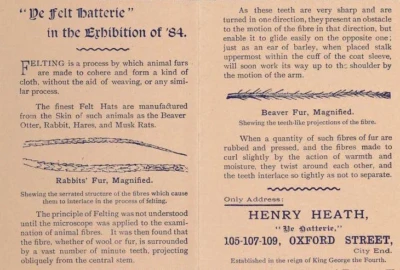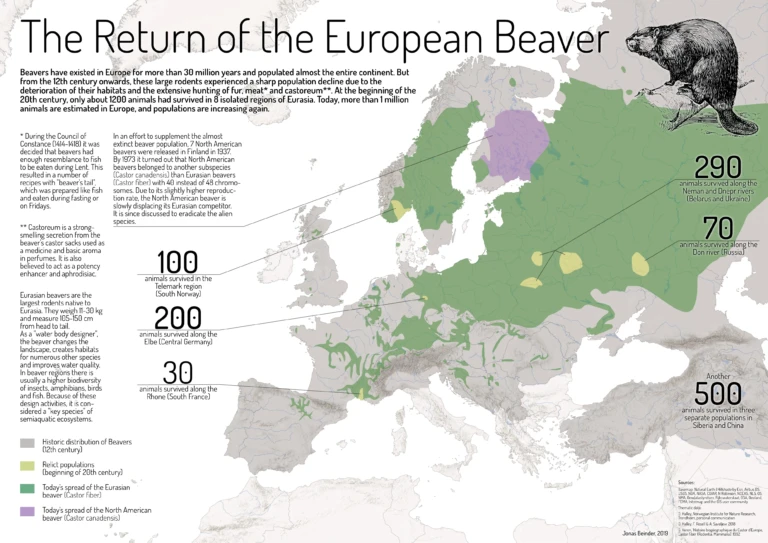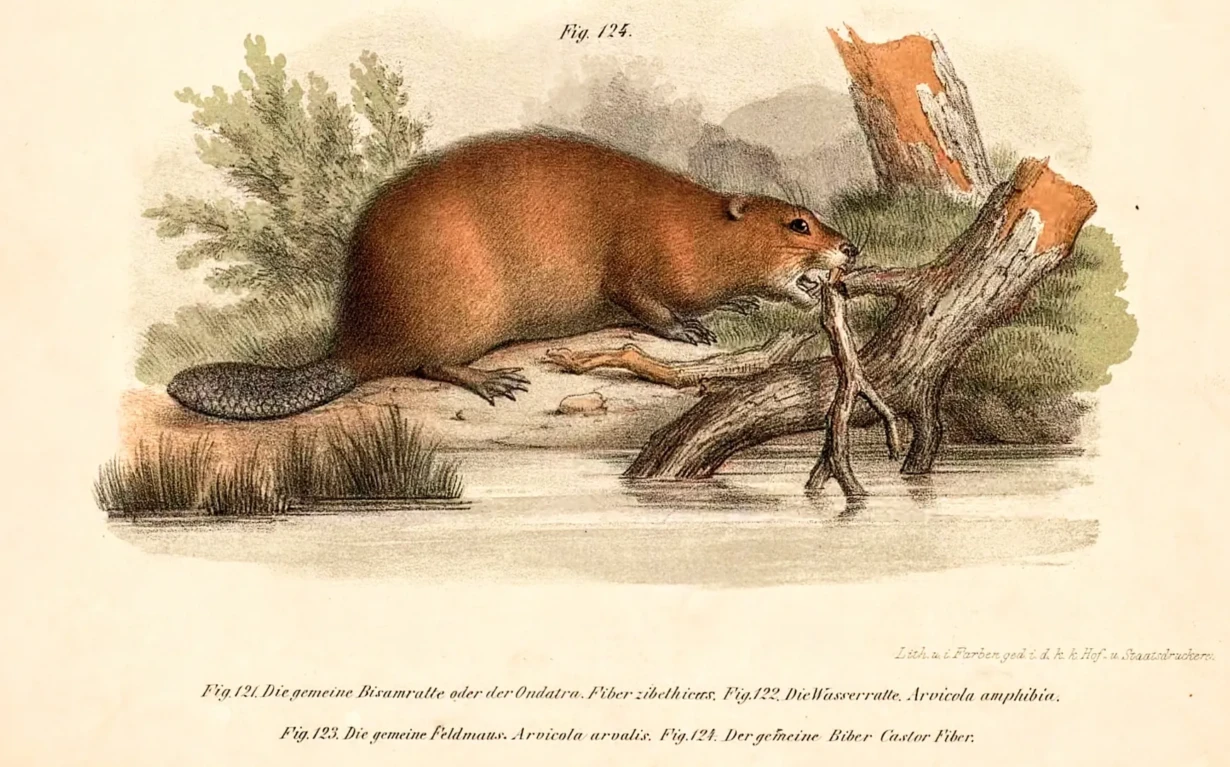
A Brief History of Beavers in the UK
Eurasian beavers (Castor fiber), Europe’s largest rodent have existed in the United Kingdom and Europe for more than 30 million years, their range encompassing almost the entire continent. Historically playing a crucial role in creating and managing wetland habitats across the continent, beavers were relentlessly hunted and persecuted, almost driving the species to extinction by the 12th century.
The last beaver records in Great Britain date back to 1100s in Wales, 1300s in England and 1500s in Scotland. In Europe, by the beginning of the 20th century, Eurasian Beavers were reduced to as few as 1200 individuals restricted to 8 relict populations.
The absence of these industrious creatures has caused massive declines in wetland habitat cover, with Great Britain experiencing 75-90% loss in wetland habitats in the last 300 years (nature.com). Though they provide essential habitats for many freshwater species and act as carbon sinks reducing the impact of climate change, these vulnerable habitats are declining three times faster than forests (Ramsar Convention Report).
What led to the Beavers' decline?
Deforestation, urban expansion and agricultural activities significantly impacted beaver habitats, reducing suitable places where they could build their lodges and dams. Further, the beavers’ damming activities would often put them in direct conflict with farmers when they would cause tree damage and property flooding. The dams, lodges and canals built by the beavers would be destroyed and further encouraged their trapping and hunting.
The relentless hunting of beavers for the following reasons led to massive declines in their populations:
Meat
Highly prized for its “rich flavor” and “tender texture”, beaver meat was considered luxury food during the Medieval and Renaissance eras.
The Catholic Church was also greatly influential on the diet and cuisine of the Middle Ages. Religious regulations forbade the consumption of meat for approximately a third of the year, particularly during Advent and Lent, In the 17th century, arguing that the beaver’s semi-aquatic lifestyle, webbed feet and scaly tail suggested that they were related to fish, accommodations were made to reclassify beavers as “fish” making them suitable for consumption during fasting periods.
Fur
Beaver fur has been prized for its softness, elasticity, shine and lightness. Beavers have some of the densest fur coats in the animal kingdom, making it extremely durable with the fur also possessing natural water repellent properties owing to their aquatic lifestyles. This led to their fur being used in the production of cloaks, coats, mittens, muffs, blankets and fur-lined garments.
However, it was the structure of the hairs in the beaver’s undercoat that made it very popular in the hat manufacturing industry. The hair comprising the under layer has microscopic “teeth” with their edges lined up in one direction making them ideal to be used for felt. The felting process further locked the hair strands in place, similar to modern velcro, resulting in a tough, durable fabric that would keep its shape under rough handling and successive wettings.
Hats were an essential aspect of Britain’s fashion from the 16th to the 18th century and were considered extremely valuable, often treated as family heirlooms with different designs signifying the wearer’s social status and occupation. The unique properties of the beaver’s fur made them extremely popular among hat manufacturers and wearers with Beaver Hats being considered among the finest of felt hats.
With beaver populations already decimated across Europe, this immense demand led to the boom of the transatlantic fur trade when beavers were trapped in North America and their pelts shipped over to London. Relics of this period can still be seen in the architecture of London’s buildings from this era.
Castoreum
The most valuable substance that beavers were sought for was Castoreum, a compound secreted from their castor sacs. Widely used as a flavouring agent, perfume and medicine throughout history, Castoreum has a strong odour and beavers use it to mark territory and often prune their fur with the fluid to make it waterproof.
Due to their herbivorous diet, castoreum produced by beavers has a more pleasant odour compared to the typical musky scent markings of most animals, with an aroma reminiscent of high-quality vanilla. This unique quality, combined with the abundance of castoreum in the fur trade era, made it a popular additive in beverages, baked goods, ice cream, cigarettes and even chewing gum. It also found its use in the perfume industry, where it was primarily used as a fixative, helping other notes linger and harmonize.
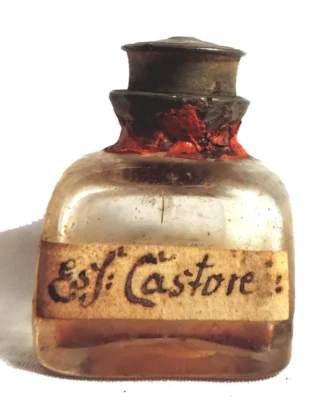
Owing to high concentrations of salicylic acid, resulting from the beavers’ preferred diet of birch and willow bark, castor oil was used as a predecessor to aspirin and widely prescribed as an antidote to a wide range of ailments from all kinds of aches, nausea, anxiety and even to induce abortions in women. The practice of using castoreum as a medicinal substance dates back to the Roman times.
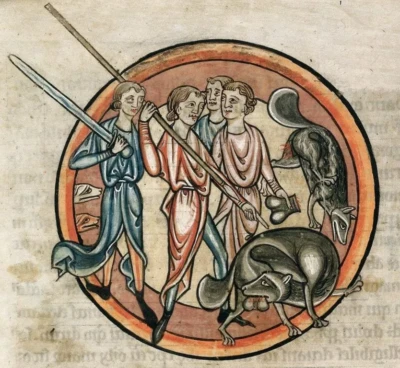
Castoreum was so popular in the ancient times that several folktales have mentions of beaver hunting, often focusing on the prized stature of this material. Pre-modern humans mistakenly thought Castoreum was produced from the testicles of male beavers, leading to some imaginative myths. As recounted from ancient Egyptian hieroglyphs and later retold in Aesop’s Fables and medieval bestiaries.
“When pursued, the beaver runs for some distance, but when he sees he cannot escape, he will bite off his own testicles and throw them to the hunter, and thus escape death.”
The Return of the Eurasian Beaver
Having being nearly hunted and persecuted to extinction, the Eurasian Beaver is making a splashing comeback. Having realized their enormous potential in nature restoration and habitat management, beaver reintroduction projects and legal protections around the world have seen beaver populations and range expand in the last few decades.
Despite their ecological benefits, beaver reintroduction in the UK has been a slow process. While European reintroductions began in the early 20th century, with over two dozen countries welcoming back beavers by 2009, Scotland only saw its first official release with the Scottish Beaver Trial in Knapdale that year.
In 2015, the emergence of beaver kits in a population of unknown origin on the River Otter in Devon provided an opportunity to establish a 5-year trial to monitor the beavers’ effects on the landscape. This trial highlighted the biodiversity, water quality and flood resilience benefits that the presence of beavers provided but also identified avenues of potential beaver-human conflict. At the end of the trial, the Government officially announced that the Devon beavers would be allowed to expand naturally and also introduced a policy framework for the management of any potential conflicts arising due to the beavers.
Beavers’ in the UK now also enjoy legal protections with Scotland’s beavers being added to the European Protected Species list in 2019 and England’s beavers joining the list recently in October 2022. These protections make it an offense to deliberately disturb or injure beavers or damage and destroy their resting structures and breeding sites.
These policy changes have significantly helped in “Bringing Back the Beaver” to the UK and help restore our habitats. However,
